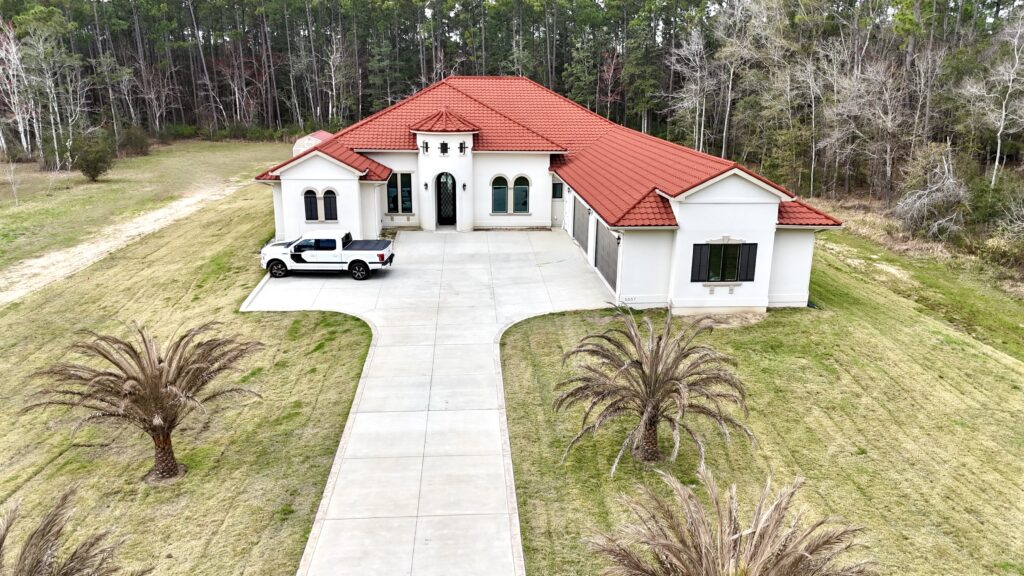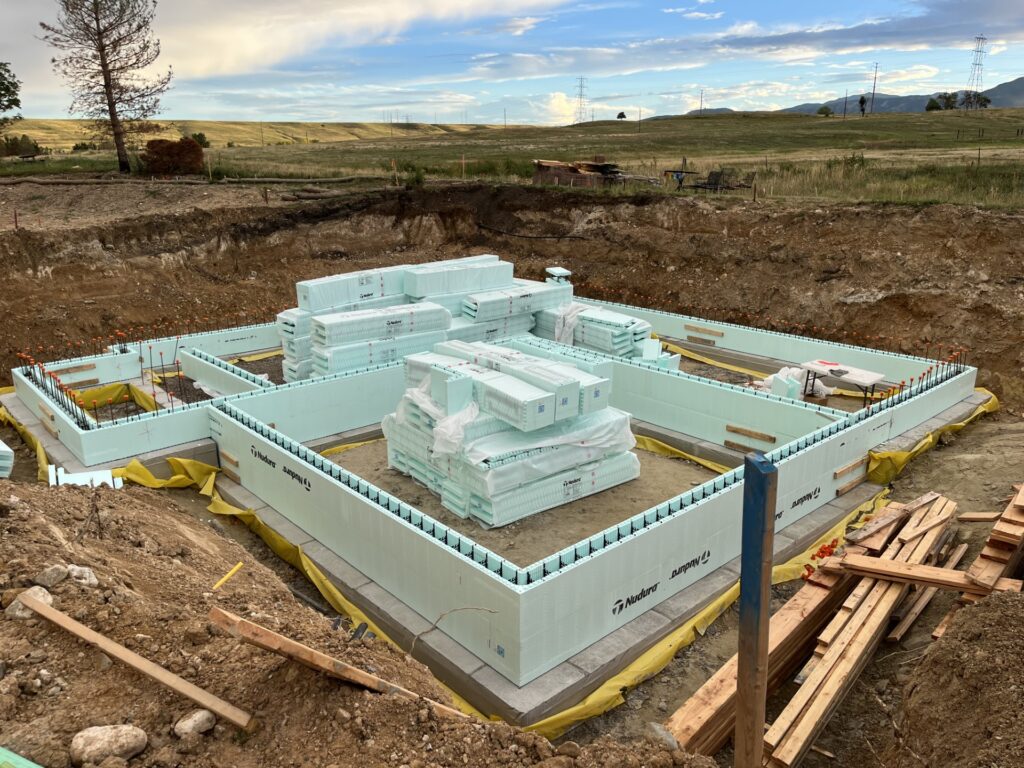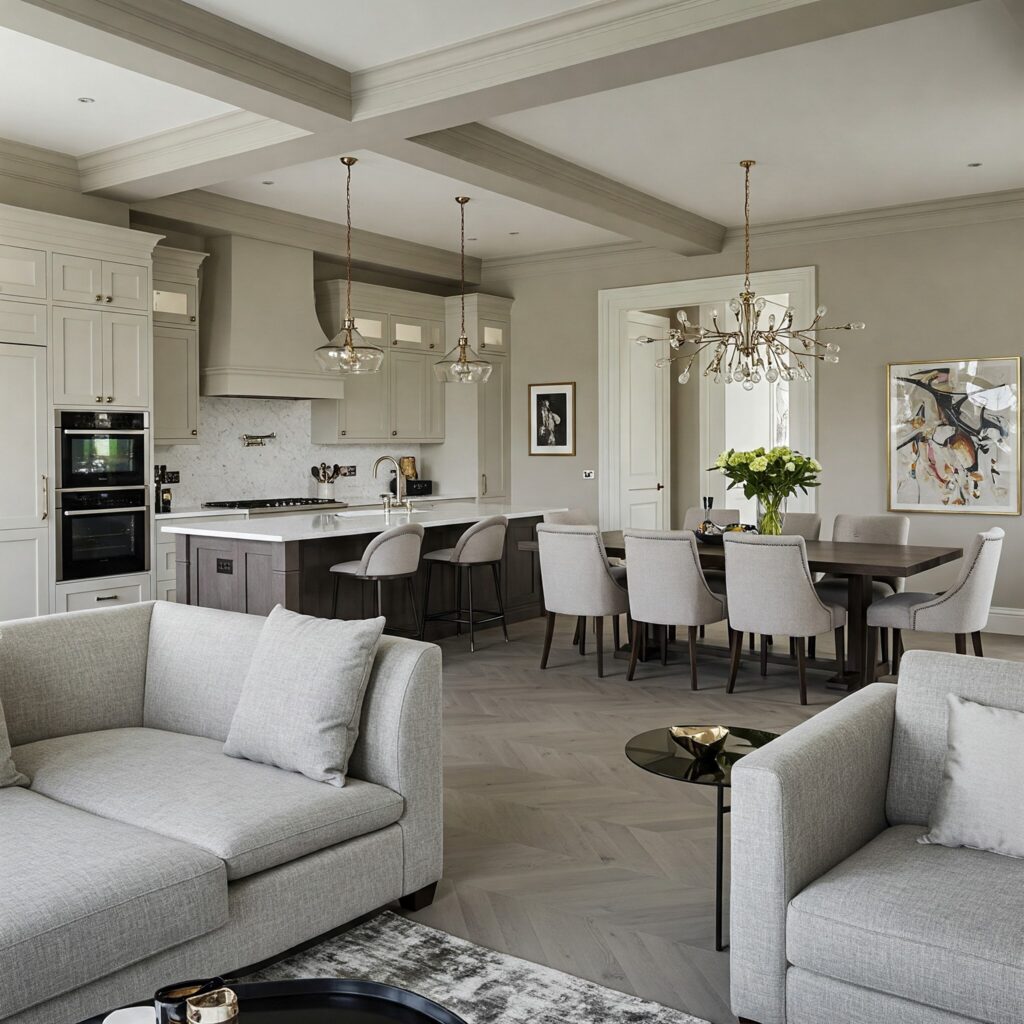In the world of custom homebuilding, choosing the right construction method is one of the most significant decisions a homeowner will make. At Batten Builders, we specialize in both Insulated Concrete Form (ICF) and traditional wood-frame construction. Each approach brings its own strengths and benefits, depending on the client’s goals, the home’s design, and the demands of the environment. While both systems result in beautiful, structurally sound homes, the differences in how they are built—and what they offer long-term—can make a major impact on your lifestyle, energy use, and peace of mind.
What Is ICF Construction?
ICF, or Insulated Concrete Form construction, is a modern building method that uses interlocking, hollow foam blocks filled with reinforced concrete. These forms remain in place permanently, offering superior insulation and creating an incredibly strong structure. Originally developed to enhance energy efficiency and structural durability, ICF has gained popularity in both residential and commercial construction, especially in areas prone to severe weather.
Unlike traditional materials that must be layered and sealed during construction, ICF blocks are designed to fit together like puzzle pieces. This system not only speeds up the building process but also minimizes air gaps, thermal bridges, and weak points in the wall. The result is a highly insulated, energy-efficient, and disaster-resilient shell that forms the backbone of the home.
What Is Wood-Frame Construction?
Wood-frame construction is the most widely used building method in the United States and has been for centuries. It involves using dimensional lumber—typically 2x4s or 2x6s—to form the structural skeleton of the home. The framework supports the weight of the roof, interior finishes, and exterior cladding. Once the framing is completed, builders install sheathing, insulation, drywall, and siding to create a complete enclosure.
The reason wood-frame remains so popular is due to its versatility, affordability, and ease of use. Carpenters and builders are generally more familiar with this method, and it provides ample flexibility for design changes during the construction process. However, its susceptibility to moisture, fire, pests, and structural movement are factors that some homeowners consider when exploring their options.
Energy Efficiency and Insulation
One of the most significant differences between ICF and wood-frame construction is insulation and energy efficiency. ICF walls offer an impressive R-value (a measure of insulation performance), typically ranging between R-22 and R-26, without the need for additional batt insulation. This is thanks to the continuous layer of rigid foam insulation on both the inside and outside of the concrete core. The thermal mass of the concrete also helps stabilize indoor temperatures by storing and gradually releasing heat.
In contrast, wood-frame homes rely on fiberglass, spray foam, or cellulose insulation placed between studs. Even with high-quality insulation, gaps around studs and between wall sections can create thermal bridges that reduce energy efficiency. Although modern sealing techniques have improved, wood-frame walls still tend to experience more energy loss than ICF systems.
For homeowners concerned about monthly utility costs or maintaining stable interior temperatures, especially in hot and humid climates like the Gulf Coast, ICF offers a clear edge.
Durability and Strength
Durability is where ICF construction truly shines. Reinforced concrete walls provide superior strength against high winds, impacts, and even natural disasters like hurricanes, tornadoes, and earthquakes. In fact, according to the Federal Emergency Management Agency (FEMA), ICF homes can meet or exceed disaster-resistant criteria, making them a smart choice in coastal or storm-prone areas.
Wood, while resilient and flexible, is more vulnerable to environmental threats. Termites, mold, rot, and fire can compromise the structure over time, and homes built with wood often require more maintenance in the long term. In contrast, ICF walls do not rot, warp, or attract pests, and they provide a much higher level of fire resistance.
For families looking to build a home that stands the test of time with minimal upkeep, ICF presents a compelling case.
Environmental Impact and Sustainability
Both ICF and wood-frame construction can be environmentally responsible, but they do so in different ways. ICF structures often use expanded polystyrene (EPS) foam and recycled steel rebar. Because of their superior insulation and energy performance, they require less energy to heat and cool over time, significantly reducing the home’s carbon footprint.
Wood is a renewable resource and can be harvested sustainably, especially if sourced from certified forests. However, the environmental impact of harvesting, processing, and transporting lumber—as well as the need for chemical treatments to resist pests—can offset some of those benefits.
Ultimately, the environmental friendliness of either method comes down to materials sourcing, construction practices, and how the home performs over its lifetime. At Batten Builders, we aim to implement best practices no matter which route you choose.
Design Flexibility and Aesthetic Options
One area where wood-frame construction has traditionally held an advantage is design flexibility. It’s generally easier to modify or add features during the build process when working with wood. Open-concept layouts, angled walls, dormers, and custom rooflines are often easier to achieve due to the adaptability of the framing.
That said, ICF systems have made great strides in accommodating complex designs. With the right planning, curved walls, large window openings, and custom architectural features are all possible. Additionally, ICF homes can be finished with any exterior style—from stucco to brick, siding to stone—allowing them to blend seamlessly with the homeowner’s vision and neighborhood character.
Both systems provide creative freedom, but wood-frame may appeal more to those who prioritize in-the-moment changes or intricate structural designs. ICF, on the other hand, rewards early planning and delivers unmatched performance once complete.
Construction Time and Cost Considerations
Time and budget often drive major decisions in home construction. Wood-frame homes are typically quicker and less expensive to build, especially when subcontractors and tradespeople are familiar with the method. Materials are widely available, and labor is more readily accessible, which helps control project timelines and expenses.
ICF homes may take slightly longer to build due to the need for specialized crews and equipment. However, this difference is often offset by savings in insulation, energy efficiency, and long-term maintenance. While ICF construction may involve a higher upfront investment, homeowners often recoup those costs through lower utility bills, reduced insurance premiums, and fewer repairs over the years.
It’s also worth noting that material and labor costs are constantly fluctuating. In some regions, the cost difference between wood and ICF has narrowed considerably, making it a worthwhile conversation for anyone considering a custom build.
Safety and Indoor Comfort
Beyond structure and savings, both systems impact daily living in important ways. ICF construction provides excellent sound insulation, thanks to the thick concrete core and foam insulation. This means less outside noise, a more peaceful home environment, and even potential privacy between rooms when used for interior walls. ICF walls are also more airtight, reducing drafts and allergens.
Wood-frame homes can also be built with comfort in mind, especially when high-quality insulation, air sealing, and HVAC systems are properly integrated. However, they are more susceptible to seasonal movement and expansion, which can sometimes lead to squeaky floors, drywall cracks, or insulation gaps over time.
If your goal is to create a quiet, comfortable, and healthy indoor space, ICF construction offers a clear advantage.
So, Which One Is Right for You?
Choosing between ICF and wood-frame construction is not about finding the “best” system overall—it’s about selecting the one that fits your specific needs. At Batten Builders, we don’t believe in a one-size-fits-all approach. Instead, we take the time to understand your vision, your budget, and your goals, then help you make an informed decision based on real-life experience and technical expertise.
For those prioritizing storm resistance, long-term durability, energy savings, and indoor comfort, ICF is a powerful solution. For those wanting a faster build with flexibility in design and budget, wood-frame construction may be the better fit. Fortunately, our team is equipped to build both, ensuring you don’t have to compromise between your dreams and what’s possible.
Why Experience Matters When Choosing a Builder
Whichever path you choose, the success of your project ultimately comes down to the experience and quality of your builder. Building with ICF requires different techniques and considerations than wood framing, and not every builder is trained to do both. At Batten Builders, we bring years of experience in both methods, and our commitment to craftsmanship ensures that your home is built to the highest standards—regardless of the material.
We help our clients weigh every option, break down costs, walk through energy modeling, and review floorplans through the lens of performance and livability. This hands-on, educational approach is one of the reasons why so many of our clients become long-term advocates.
Final Thoughts
Whether you’re building your forever home, a coastal retreat, or an investment property, the decision between ICF and wood-frame construction deserves thoughtful consideration. With Batten Builders as your partner, you don’t have to make that decision alone. We’re here to answer your questions, provide real-world guidance, and bring your vision to life—no matter the material.
Want to explore the possibilities? Let’s talk. Your dream home is closer than you think.





